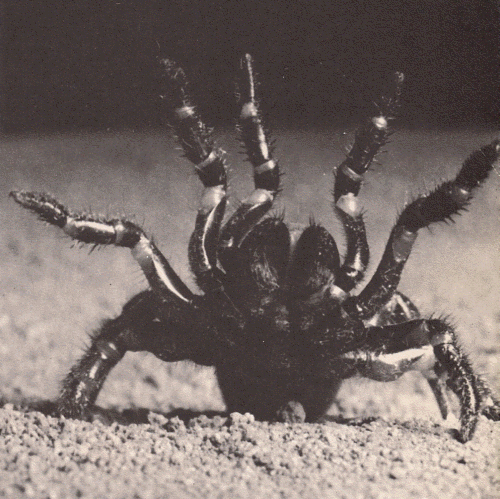Trap-Door
Spiders
This order of spiders is
so-named because of its habit of digging a burrow
into the ground, which is lined with silk, and
capping the burrow with a trap-door made from
layers of silk and earth.
The spider usually lays a
"trip-line" out from the trap-door that
runs down into the burrow. When an insect or
other potential prey disturbs the line, the
spider darts out from its burrow and captures its
prey. The trap-door is often coated with moss or
some other form of camouflage, making it
virtually impossible to detect until it is too
late.

Most trap-door spiders are rather large, with
some species being up to 4-1/2 inches across.
They have four lungs instead of two, and their
jaws work vertically instead of sideways. Each
jaw also has a special row of teeth, used to help
the spider dig its burrow.
Females seldom stray far from their burrows,
especially when they have eggs or spiderlings.
Eggs and spiderlings are cared for by the mother
for a few weeks, with the mother feeding her
young with excess food she has captured.
Most species of trap-door spider are
nocturnal.
Trap-door spiders are widespread throughout
the hottest regions of the world, with a few
scattered species found in more temperate zones.

Scientific Classification
phylum Arthropoda
class Arachnida
order Araneae
suborder Mygalomorphae
family Ctenizidae
Questions or comments about
this page?
|



